Exploring how women face crises
Hello ji,
I don’t remember a lot from my early childhood. But some memories have a way of being more vivid than others – like the memory of watching a potential explosive go up in flames, and counting down the seconds before it takes you and everyone you love along with it.

My parents, brother and I lived in a small first floor apartment with a balcony. My grandfather was visiting us. We were young, so my parents had a full-time nanny staying in the house to watch over us and, ironically, to ensure we didn’t kill each other.
One night, our nanny lit a lamp in the balcony (I have no memory why she lit the lamp. Was it Diwali? Was she praying to some other seasonal Gods? Was she stocking Adarsh Housing Society files? No idea. Shrug.)
At the time, we were the proud owners of one of the iconic Shriram gensets of the 90s. Fellow connoisseurs of power back-up might recall that this genset had one tank full of petrol and another full of kerosene. The genset was a massive source of carbon emissions and so, we kept it in the balcony.
Naturally, the flame from the lamp somehow reached one of the fuel tanks, and up it went, in fumes that went six-feet-high.
This is where my brain decided to take a mental picture for posterity. All of us – me, my brother, my dad, the lamp-lady, and my grandfather – standing transfixed, staring open-mouthed at the fire – useless, like deer-in-foosil-fuel-lights.
And then, from the corner of my eye, something came flying into view. Was it a bird? Was it a plane? No, it was my Supermom – who had grabbed the nearest quilt (better known to us as a razai) and thrown it over the genset, killing the flames before they killed her family.

Fellow aficionados of hypothermia prevention might recall that the average 90s’ razai weighed about three thousand kilograms. Yet, my Mom had somehow deadlifted it with one hand to save the day while the rest of us uselessly looked on. I remember my grandfather gushing about his daughter-in-law’s courage for as long as he lived.
Of course, five minutes after having our lives saved by a woman in a moment of crisis, we all probably went back to the television to continue watching women characters respond to crisis situations with all the courage of a wet wipe.

From the Angry Young Man to the Romantic Hero, all the popular male tropes hinge on the man’s unquestionable strength. Naturally, this strength is established in the way he rescues the various versions of damsels in distress around him.
Whether it was the andhi behen (blind sister), or the vidhva maa (widowed mother), or the abla naari (powerless woman) – every woman in the vicinity of our hero needed to be rescued by a man.

The Damsel in Distress was, of course, a necessary tool for storytelling.
Without her, how would scriptwriters get a chance to establish the hero’s courage, his virtue, and (most importantly) his abs?

This week, I will share the stories of precisely three women who found themselves in distress – and we will examine how these stories hold up against the stereotype.
The story of Shanti, which is almost a century old, but the legacy of which lives on today through the lives she touched. The story of Ramya, a young mother who was separated from her own child for several years. And the story of Mallika, who found herself in the middle of a terrorist attack we all remember.✓
Shanti
I met Manju ji on an online forum recently. She told me the story of her mother – Shanti – a damsel who put distress to shame, way back in the early 20th century.
Here is Shanti’s story, in the words of her daughter:
“My mother was a single child of relatively affluent parents. My grandfather was a Superintendent of Jails during the British era, and owned a lot of ancestral property. My grandmother’s education was ended by her family after Class 8, but she made sure my mother was educated well.”
“Everyday, my mother would ride on a bicycle to school in pre-independence undivided India – a time when you would hardly ever see a girl out and about in a public space like that. In fact, her father would send a Sepoy to follow her at a distance for her safety. She went on to go to college and complete her graduation in teacher training. She was a horse rider, an athelete, a violin player, and an expert in embroidery work – all at the same time.”
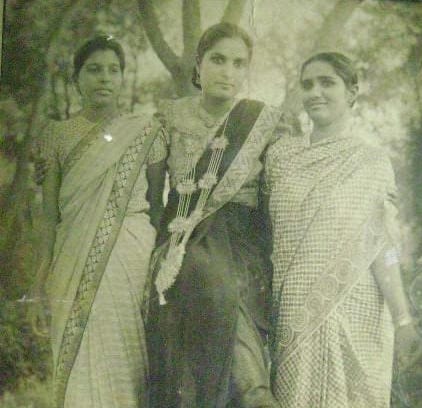
“After graduation, she married my father and moved to Multan to be with him. Multan, of course, fell in Pakistan at the time of partition. But fortunately, my father was a government servant and they were posted in Chandigarh (India) at the time of the Partition. So they were spared the worst of it.”
“My parents loved each other dearly. They had five daughters (perhaps in the hope of having a son – my maternal grandfather’s wish!) Years later, we came across some of their letters and were touched by how full of love they were.”
“We loved our life in Chandigarh. But then, tragedy hit our happy family. When my eldest sister was 12 years old, and the youngest was just one-year-old, my father suddenly passed away in drowning accident. It was the day after Karva Chauth. My mother was shattered with grief.”
“We had to vacate our government residence. My grandfather bought some land in town to construct a new house for us. But, tormented by the sight of his beloved daughter widowed and grieving, he too passed away, just six months later – leaving our new house unconstructed. My mother was only 38 years of age, and she now had five daughters and a widowed mother to support all by herself.”
“There’s a saying that when the times get tough the tough get going. My mum did exactly that. She took up a job in a school and began playing the role of both – the man and woman of the house.”
“I remember one scene so vividly. Some wood was needed for the construction of our new house. My mom went to a nearby village to get it herself. It was the winter season and the nights were very dark and foggy. My grandmother was pacing up and down outside the house. Suddenly, a horse cart appeared through the fog, with the wood loaded on it, and a kind looking sardar ji driving it. And there was my mum, sitting on top of the wood, taking her change in status in her stride.”
“Instead of being a damsel in distress, she rose to the challenge life had thrown at her, and how!”
“People would look at our family – seven women(!) – and think, ‘Bechari!’ (Poor women!) But my Mum never allowed us to feel like becharis. She made sure we were all educated and could stand on our own feet. We were never stopped from choosing what we wanted to be.”
“My eldest sister went on to become an architect. The second did a Masters in Anthropology, the third in Sociology. I am the fourth – an interior designer – and my youngest sister is a doctor. When my eldest sister retired as the Chief Architect of Chandigarh, my mother was very proud. She would often say that she wished our dad was around to see the wonderful achievements of his daughters.”

“Life was never easy for my Mum. The choice of educating all her daughters in the best institutes created financial problems. She had to sell properties and her gold jewellery along the way. But she never complained. She would say ‘Nothing is more important than my children’.”
“She also raised us with exceptionally more freedom than any girls got at that time. She always trusted us and we never let her down. She would continuously tell us, ‘Be bold. Speak up and be heard’. Even after marriage, she would tell us ‘I am there for you if anything goes wrong’. Sometimes it did, and she was always there to stand by us.”
“She was bedridden for the last few years of her life. But she never lost her joie de vivre. Despite all of the tragedies life had thrown at her, she was capable of childlike joy. She would get excited about small things like new clothes, small jewellery and the new flowers in her garden. She was always the first one to notice and compliment us on anything new we wore. Her capacity to love and be loved was amazing.”
“We all celebrated her 90th birthday together. All her children and grandchildren made it a point to be there. She was like and excited child, very happy with her presents and the huge cake. Sometime after that, she died peacefully in our arms, chanting the gayatri mantra.”

“Since she passed, there has not been a day that I have not missed her. Her strength, her love, the feeling of her flesh when she put her arms around me are still fresh in my mind. She never made us feel the absence of our father. She shaped us to be strong individuals, able to stand on our feet, fight for what was right. Today, whenever I am down, my daughter tells me, ‘Remember whose daughter you are!’ and I feel my mother’s courage surge through me all over again.”

✓
Ramya
Trigger warning: Abuse, suicidal ideation
After they dated for five years, Ramya married Matthew. From the very beginning, she was not sure about converting the relationship into a marriage. But he was adamant, and she finally relented.
“Even on the wedding day, he was still making demands for ‘gifts’ that he should be given on the day. He kept calling to check: ‘Did you buy that? Did you buy this?’ As my parents’ only child, the task of planning the wedding had fallen on me. So, there I was, on the day of my wedding, running around the market, buying these ‘gifts’ to meet his demands. I had a sinking feeling that I might be walking into something very unpleasant. But the guests had arrived and the option to call the wedding off did not even occur to me.”
Things got worse after the wedding.
“We had a baby soon after. He was an absentee partner. After the delivery, I even had to discharge myself from the hospital and come home with the baby on my own. Matthew was very upset about how the baby might affect his career as he wanted to move abroad. He said, ‘Now that you have had this baby, I can’t take my career where I want to, because I’m stuck here with you!’ I decided that I would shoulder most of the caregiving so that he did not feel burdened. I took a sabbatical from work.”
That did not stop the arguments between them, and things kept getting worse.
“I vividly remember one incident, which hurt me, yet became a motivation later to prove myself. He twisted my arm and raised his hands on me. It was a pain I could not tolerate.”
A few years later, Matthew got an opportunity in New York. Ramya and their son moved with him.
“I set up the house, I looked after the baby, I managed everything there. Yet, his abuse continued. When he would calm down, I would try to have a conversation with him about it. One day, he said, ‘You are like my doormat. I will walk all over you if I want to.’ Finally, one day, he was beating me again when I hit back. I told him that we were no longer in India. If I made one call to the police here, he would be behind bars and would lose his job, everything.”
After that, the abuse stopped. But Ramya had a nagging feeling.
“I kept telling myself that it was all in my head. Then one day, when he was at work, I was cleaning the house. I came across our old digital camera. When I turned it on, I found intimate pictures of him with a woman who both of us knew well. I was distraught. I realized that I was putting up with someone who had no respect for me as a woman, let alone the relationship.”
She kept the camera back, and started thinking of moving forward in life.
“I knew he would not let me and our son leave if I told him. So one day, I just picked up my bag and passport and got on a flight to India with my son. I came back to my parents’ house. I could not bring myself to tell them what had happened so they just assumed that I had picked a fight with my husband and come home. A few days later, Matthew came over and created a huge scene. My parents pressurized me to go back with him to our old home in Bangalore and sort things out.”
Ramya relented. Back in Bangalore, Matthew took their son out of the house on the pretext of buying him some new clothes.
“They never came back. He took my son away from me and flew back to the US. He also took all my money with him – my accounts were empty, I had no savings, not even enough to fly to the US to chase after them.”
“I felt hopeless. I climbed the balcony of our flat which was on the 19th floor, thinking I will jump off and end my misery. But when I looked down, I saw a woman playing with her son, hugging him, kissing him. I decided I had to carry on for my child, even if I couldn’t reach him right now.”

Ramya decided to fight for legal custody.
“I filed case after case in India, tried to get my son back, tried to get a divorce and child custody. Indian courts just kept giving me dates after dates. Meanwhile, he got a restraining order against me in the US for kidnapping my own child.”
Days turned into months and months into years. Matthew and her son became US citizens and Ramya lost all hope of legal recourse in India.
“Matthew had taken away all my assets, but I had one thing he could not touch – my experience and education. I started applying for jobs. I had worked in corporates before taking the break when my son was born. Corporate world had changed a lot in the years since then. But I managed to find another job. Over the next few years, I focused all my energy on my career. Seven years passed. I rose to a senior position in my job. I had finally regained my independence and could breathe again.”
Meanwhile, Ramya’s son, now a nine-year-old, started demanding that his father take him to meet his mother.
“Matthew called my father, and told him they will be moving to Dubai soon, and that I could come if I wanted to meet my son. That was the first time I laid my eyes on him since his father took him away from me. I can never forget that day. I hugged him, and talked to him for hours and hours. He knows that his father and I are separated, of course, but I was careful not to tell him any details because his relationship with his father is precious for him.
Today, Ramya’s son is 15-years-old and continues to live in Dubai with his father (who eventually owned up to Ramya for everything he did to her). Ramya talks to her son everyday and visits him every few months.
As she reflects on her journey so far, she cannot help but think about how she had to struggle against all odds with no support from anyone in her darkest time.
“I remember having to delete my son’s photos from my phone, taking down his pictures from the wall. It was unbearable to look at them and not be able to see him, hold him. I had no money, no assets, no support from family because my parents themselves were ageing and I could not dip into their retirement funds for my survival. I had a choice – I could either drown in my grief and end my life, or I could swim across to the other side, even when the other side was not visible. I chose to swim.”
A few years back, Ramya quit her corporate job, moved back to her hometown, and started her own organization.
“My work is to help local communities, especially women like me who are in distress with no one to help or support them through it. I tell all the women I work with one thing:
“Women tend to put everyone else’s needs ahead of their own. If the family has a dog (like mine does) they will even put the dog’s needs ahead of their own. You need to stop doing this. Prioritize yourself first. Focus on your own health, peace, and growth. If you are strong and financially independent, you can support others around you. Don’t expect anyone to come save you. You have to be your own saviour.”
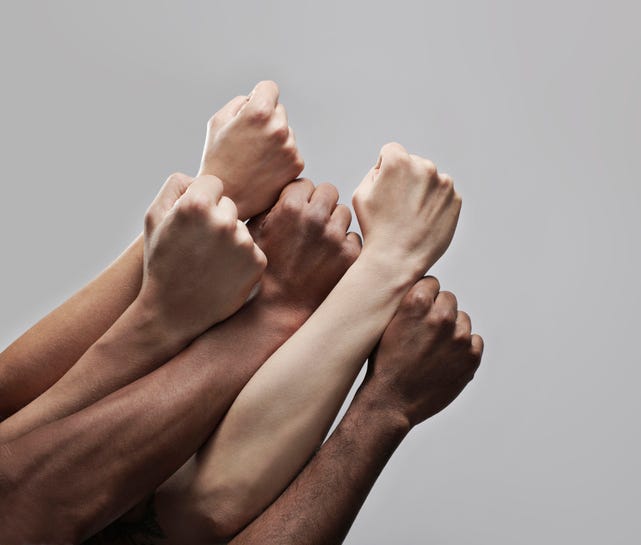
✓
Mallika
Mallika Jagad is happy to be alive today.
“I don’t use the word alive lightly. I truly value it because I was among the lucky ones to survive the 26/11 attack.”
On November 26, 2008, ten terrorists rampaged down the streets of Mumbai, firing indiscriminately at civilians. The attack continued for three days, as the gunmen setup their base at the Taj Hotel, shooting guests and staff members at sight. Around 200 people died and over 300 were wounded in the attack.
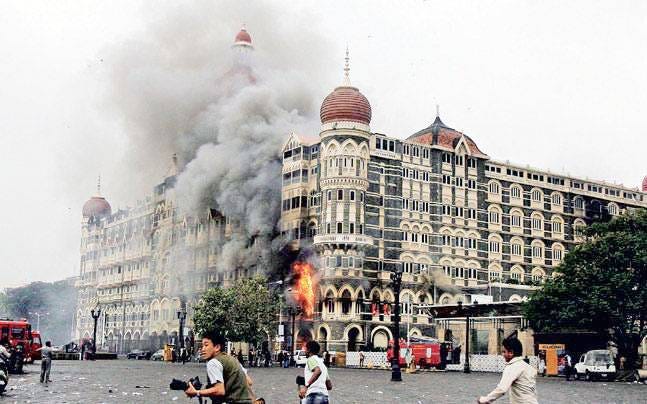
As the country and world watched the horror unfold on their TVs, Mallika was one of the staff members trapped inside the Taj – suddenly finding herself in-charge of the lives of a roomful of guests and staff members.
The American economist, Rohit Deshpande, teaches a case study on the incident to his students. In a talk, he says:
“On that night, 500 guests were staying in the Taj, and 600 guests were inside, attending events and such. 600 staff members were on duty that day. Many of them were youngsters, mothers, fathers, sole breadwinners with children waiting at home. All of them knew all the main exits, back exits, and fire exits. They knew how to get out, and get out fast.”
“All the research we have in psychology would tell us that they should have escaped. When I teach this study, my students wager that no more than a quarter of them – maybe 150 – might have stayed back. But the fact was that all of them stayed back. Some escorted guests out and then came back to help others.”
Mallika was working that day as a Banquet Manager, hosting a corporate party for the seniormost officials at Unilever and their families.
“Everything from that horrifying day is still fresh in my mind, as if it happened yesterday. It was a typical hectic day at the Taj. November is peak tourist season for us in the hotel management sector, so we were having a usual busy day.”
“There were wedding receptions, banquets, cocktail dinners, and a lot of events happening at the hotel. Suddenly, we heard what sounded like fireworks. I assumed they were coming from a wedding closeby. But then, we all started getting phone calls and text messages that there was a gunman in the building.”
Mallika immediately instructed the staff to shut all the doors.
“We turned the lights off, and pushed some furniture to jam the doors. I told the guests to move away from the doors and windows, and settle down on the floor. No one knew what was going on outside. We started getting messages that there wasn’t one, but four armed terrorists in the hotel. There were 65 of us locked in that room that day, emotions and anxieties raging high.”
Leena Nair, who was then the VP HR, South Asia, and was among those present in the room, said in an interview:
“Mallika came to us and said, ‘We don’t know exactly what is happening, but we request you all to get down on the floor immediately.’ The calm and composure that the staff displayed was absolutely amazing. They even had the presence of mind to tell us, ‘Couples please separate. Don’t stay in the same corner of the room.’”
Such situations can bring out the best or the worst in people. There is no question what side of Mallika it brought out.
“I was scared, of course, but I also had faith in myself. I don’t mean to sound conceited but I genuinely felt like I was the best person to handle the situation. Some people wanted to run out the door and find the nearest exit. Others wanted to stay put. The decision was down to me, and I decided we would stay put. My intuition told me that this was not a time to show heroics, but to keep calm and keep everyone safe.”
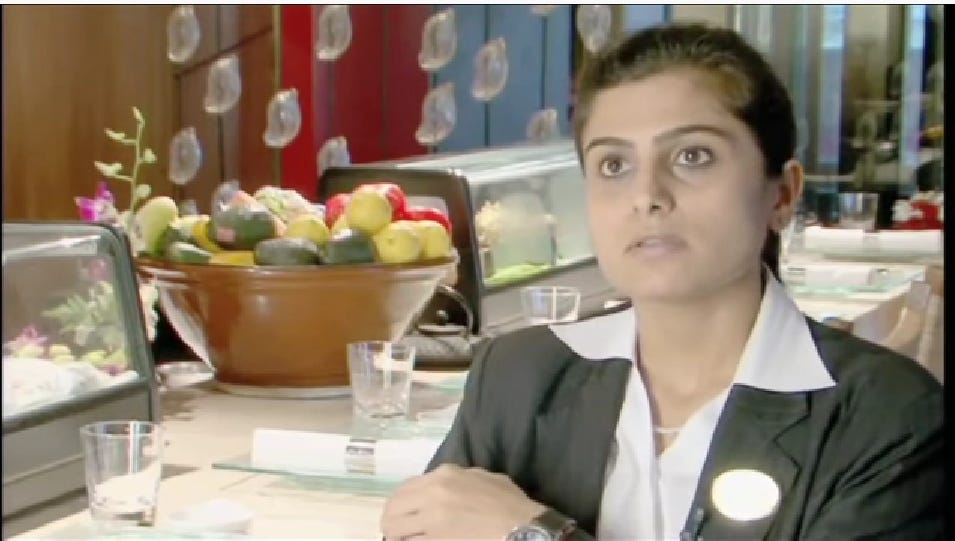
“I was only 24 years old at the time, the youngest person in-charge of a roomful of CEOs and senior people from one of the largest multinational organizations. Not all of them agreed with my decision. They questioned what I was doing, and demanded a plan of action. But of course, I didn’t have a plan – no one can have a plan for something like this!”
“All I knew was that I needed to keep everybody safe. If I allowed some guests to run out, they might run to their deaths, or even give away the location of everyone in the room. So, I made it clear that no one would leave the room. It took a lot of work, but I did it – by reassuring those who needed to be reassured, and bullying those who needed to be bullied. (It helped that there was plenty of alcohol in the room, and we ensured it was well circulated!)”
How did she deal with the fear of death? How did she remain so calm under the very real possibility that they might not make it?
“Naturally, I was afraid, I cried a bit. But there was a job to be done. I did what I could to the best of my shaking nerves at that point of time. We stayed in touch with security throughout the night to keep getting updates of the situation. We devised plans of how we would evacuate if an opportunity came up. All the while, I did not allow myself to believe, even for a second, that we wouldn’t make it.”
Picture this. It was past midnight. 65 people were sitting on the floor of a pitch dark room, holding their breaths, trying to not make a sound. Outside, the terrorists were gunning, burning, and destroying everything in their sight.
“The chandeliers were shaking and debris was falling from the ceiling on our heads. At 3am, we heard from the security team that the NSG was in the building, and the operation to fight the enemy had begun. But by 5am, the fire lit by the terrorists had spread to the corridor outside our room. The room began to fill up with smoke. We knew we had to evacuate.”
“Since the corridor outside the room was on fire, there was no way for us to escape through the doors. We saw the fire brigade outside, trying to put out the inferno raging on the floor above us. We broke some windows and waved out to them. They set up a ladder and we started sending people down to safety through the window. Finally, I was able to get my team and all the guests out safely.”
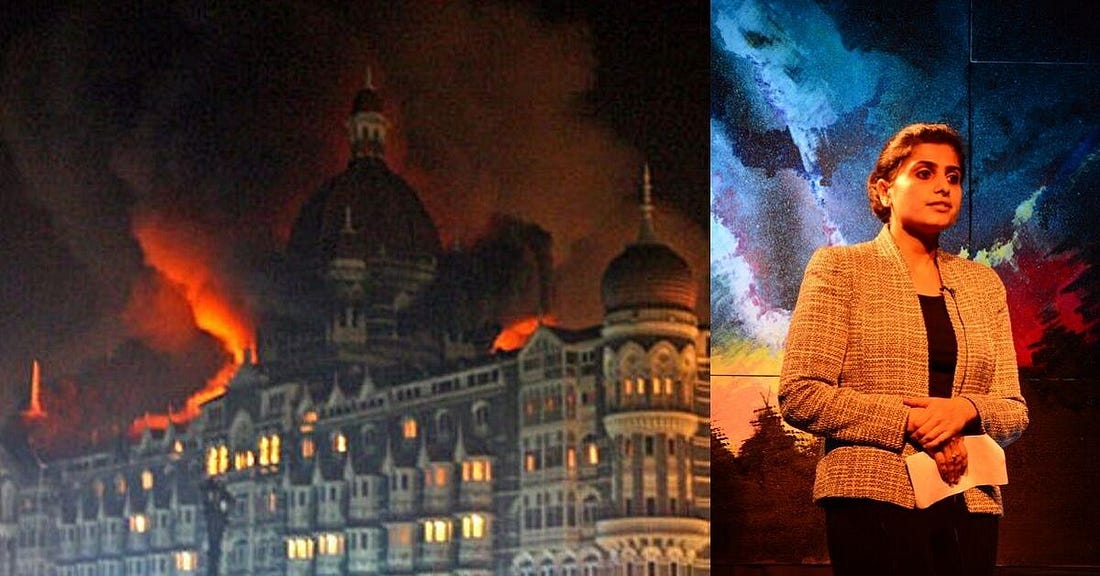
Leena Nair says:
“The staff insisted that we – the guests – would go first. And they remained behind until all of us came down to safety.”
Ratan Tata, the then Chairman of the Tata Group, said in an interview:
“I can’t explain it. There were no manuals. There were no instructions for what should be done in these circumstances. (Yet) individual staff members made it their goal to get the guests to safety.”
Despite the bravery shown by women day after day, in situation after situation, popular culture continues to be portray them as hapless victims.
When I asked Mallika her thoughts on this, she said:
“I wasn’t raised by my parents to play the victim. That day, I owed it to myself and others around me to rise to the occasion. When the time came, I found a strength inside me that even I did not know existed. It helped me do what was right for the 65 lives that I was responsible for.”
“History has always been written for men, by men, portraying men as brave, courageous, saving the day. Not many stories about the bravery of women came out. But that doesn’t mean they did not exist.”
✓
This piece was inspired by this video of one of my favourite famous people, Reese Witherspoon. In the video, she talks about how she got so sick of scripts written by men which portrayed women as damsels in distress that she decided to set up her own production house to tell stories written by women – stories that depicted how courageous, complicated, flawed, and multidimensional real women are.https://www.youtube-nocookie.com/embed/qqPAe0s4yNk?rel=0&autoplay=0&showinfo=0&enablejsapi=0
Last year, she sold the production house for $900 million proving that stories of real women can sell too.
Perhaps much more than those of shirtless superstars with a saviour complex?
Mahima
This newsletter comes to you free of cost. But that does not mean that it costs nothing.
Womaning in India is a physical, mental, and emotional labour of love. If you appreciate the work I am doing with it, show me your love by buying me a coffee.
Womaning in India is on Instagram, Facebook, Twitter, and LinkedIn.
Subscribe here to get future editions of the newsletter directly to your inbox every week: https://womaning.substack.com/
Leave a comment